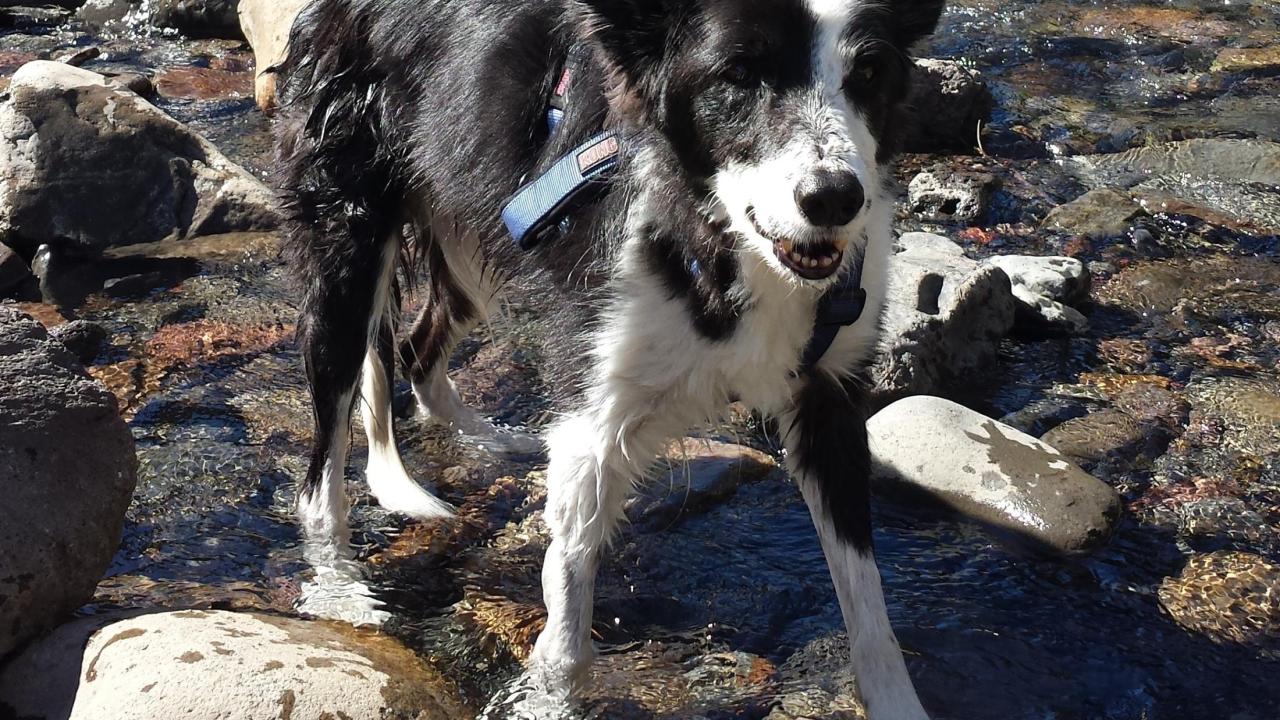
UC Davis Veterinary Dermatologists Help Dog with Persistent Skin Disease
May 2, 2017
“Case of the Month” – May 2017
Jackson, a 12-year-old male border collie, developed a crusting lesion under his eye and started losing hair in the area. The scaling condition spread down his muzzle so his owners took him to their veterinarian. A skin scraping showed a possible mite infestation, and both a pet anti-parasite medication and antibiotics were administered to Jackson. After that treatment did not clear up his condition, Jackson’s owners took him to another veterinarian; however, despite that veterinarian’s best efforts, Jackson was still suffering from his skin condition.
Five months later, the skin condition was now affecting the majority of his muzzle, and the skin appeared raw. While Jackson would occasionally paw at his muzzle, he didn’t appear to be in any pain, but his owners knew they had to find a solution to his skin condition. They eventually sought out the dermatology specialists at the UC Davis veterinary hospital.
Once at UC Davis, Jackson’s physical examination showed large areas of ulceration and crusting over his muzzle, around both eyes and down one leg. Samples taken from his skin surface revealed hyphae, which are branching filaments that make up the structure of a fungal organism. Although finding these hyphae suggests a fungal infection, they can also be just contaminants from the environment. To confirm the diagnosis of a fungal infection, a culture is needed. This procedure allows the type of organisms to be identified as they grow in a controlled laboratory setting.
A fungal culture from Jackson’s facial lesions was submitted to the hospital’s on-site Clinical Diagnostic Laboratory and subsequently grew Trichophyton mentagrophytes, a species of dermatophyte. Dermatophytosis is a type of fungal infection that is commonly referred to as “ringworm,” which often can mimic and be mistaken for a variety of other skin diseases. Dogs usually acquire Trichophyton mentagrophytes when they come into contact with rodents or an area where rodents have been living.
Early lesions of dermatophytosis can often look similar to bacterial skin infections, skin mite infections, or (when dermatophytosis involves the face) it can be mistaken for immune mediated skin disease. Differentiation between these diseases and dermatophytosis is important, as the correct treatment greatly differs depending on the cause. The skin has only a few ways to react, and many different diseases can cause the skin to become red or lose hair. This can make it challenging to determine the cause of a particular animal’s skin disease.
Jackson was placed on a course of prescribed oral and topical antifungals. Within six weeks, he made a full recovery with only a small residual scar on his muzzle.
